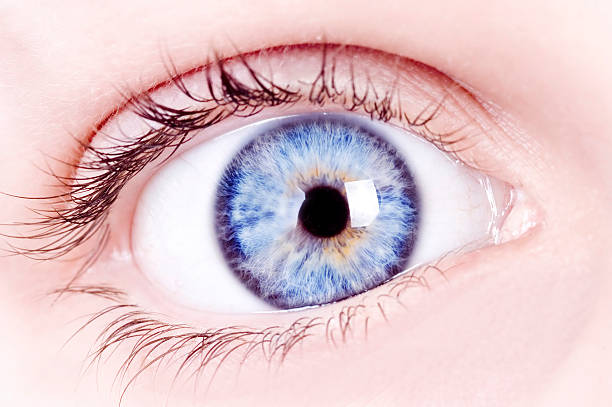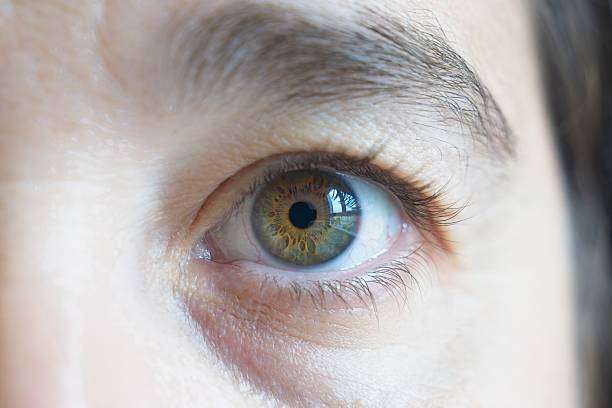A kocsi üres
Why Is My Iris Changing Color?

Iris color changes stir curiosity and concern. Many people notice subtle differences over time. This topic sparks intense interest among those who observe the phenomenon. The change may be natural or signal deeper issues. In this post, we uncover reasons behind iris color changes, discuss medical insights, and offer guidance for next steps.
1. Introduction: Unraveling the Iris Mystery
Iris color is one of the most striking features of the human face. People often wonder, "Why is my iris changing color?" Understanding this process begins with an exploration of its basics. The phenomenon can be both fascinating and mildly alarming.
Medical science explains that eye color is determined by complex biological factors. Many changes occur gradually, while some appear suddenly. The initial step is to acknowledge that every change deserves careful examination. The topic draws interest from both the curious and those who need medical insight. Innovations in eye care research now offer better answers. Clarity on iris changes can ease fears and put the focus on well-informed decision making.
“The eyes are the window to the soul, and changes in them tell a story about our inner health.” > – Renowned Ophthalmologist
Use this guide to learn why your iris might change color and what it may imply.
2. Understanding Basic Eye Anatomy
The human eye is built for vision and function. The iris is the colored ring surrounding the pupil. It plays a critical role in regulating light. Its texture and hue add unique beauty to every individual.
Detailed Diagram of the Human Eye
This structure is both delicate and dynamic. Even slight alterations in the tissue can affect its appearance. Understanding the iris’s structure is essential before diving deeper into color variations.
3. Factors Determining Iris Color
Various factors define the natural color of your iris. The primary determinant is melanin. Melanin is the pigment also found in skin and hair. Its concentration plays a major role.
Light exposure, eye genetics, and age contribute as well. More melanin equals darker shades. Less pigment leads to lighter hues or blue and green tones.
Consider these key points: - Genetics dictate baseline pigmentation. - Melanin distribution ensures uniqueness. - Environmental influences can modify appearance.
The balance between pigment production and loss is delicate. Changes in this equilibrium lead to noticeable shifts in color. The underlying factors deserve attention.
4. Genetic Influences on Iris Color
Genes play a significant role in eye color determination. They dictate how much melanin is produced. Many inherit traits that render a stable hue throughout life. Genetic variations, however, may produce gradual adjustments.
Certain genes can trigger subtle hue variations over time. They influence pigment density and iris structure. Inherited conditions may predispose the eyes to changes. Genetic research confirms that even minor variants can cause noticeable change. Detailed family histories may provide clues to eye differences. Maintaining awareness of genetic factors ensures early detection and resolution if issues arise.
A strong genetic foundation explains many stable cases. However, not all changes are governed solely by genes. Environmental and medical factors frequently play a supporting role.
5. Medical Conditions and Iris Color Change
Medical conditions sometimes alter iris color. Inflammation, infections, and disorders can disturb melanin balance. Some conditions prompt rapid color change. One common condition is Fuchs’ heterochromic iridocyclitis. This disorder causes asymmetry in iris pigmentation. Other conditions include pigment dispersion syndrome and uveitis. - Examine symptoms diligently: Notice differences in brightness and texture. - Assess pain or discomfort: Report any unusual eye pain promptly. - Monitor vision changes: Blurred or double vision calls for attention.
Each medical cause demands its own approach. Early detection makes a significant difference. Knowing the signs can lead to timely interventions. Regular check-ups with eye care professionals can help mitigate risks.
6. The Role of Aging in Iris Pigmentation
Aging affects every part of the body. The iris is not exempt. With time, pigment cells may gradually decline in number. An aging iris may appear lighter or develop uneven coloration.
Several studies confirm that aging alters melanin production. Research shows that natural wear can cause a loss of intensity. Appearance variations are a normal part of the aging process. Understanding these natural changes is crucial. This informs expectations and reduces undue worry. Regular exams help track the aging process effectively.
The research remains ongoing, but the correlation between aging and iris change is clear. Embrace changes as a sign of life’s progression while staying alert to irregular symptoms.
7. Environmental Influences on Iris Color
Environmental factors can also impact eye pigmentation. Exposure to sunlight or UV rays sometimes alters melanin synthesis. Excessive sunlight may darken the iris.
Chemical exposure, allergens, and pollutants may modify pigment as well. Researchers have noted that long-term exposure to certain elements shifts eye color. - Shield your eyes: Always wear quality sunglasses outdoors. - Limit exposure: Balance time under intense light. - Use protective eyewear: Safety goggles during hazardous activities serve as a barrier.
These actions reduce the risk of accelerated pigment changes. Environmental impacts are subtle but significant. They also influence overall eye health and comfort.
Many experts recommend integrating eye care practices into daily routines. This approach builds resilience against environmental strain. Positive habits protect both iris color and vision.
8. Impact of Trauma and Injuries on Iris Color
Eye injuries can produce unexpected results. Trauma often disrupts the iris structure and pigment distribution. Injuries may lead to patchy or irregular coloration.
Physical harm, chemical splashes, or surgical procedures can affect eye tissue. The trauma might lead to both temporary and permanent changes. - Protect your eyes: Use safety gear during high-risk activities. - Act quickly: Seek care immediately after accidental trauma. - Follow guidelines: Adhere to prescribed post-injury care routines.
Accurate diagnosis following an injury is essential. Medical professionals meticulously analyze any changes. Prompt action reduces the risk of complications and helps restore integrity.
Trauma may be the catalyst behind sudden color shifts. This knowledge arms you with the need to prevent further damage. Timely treatment plays a crucial role in recovery.
9. Medications and Their Influence on Iris Color
Some medications can change eye color unexpectedly. Prescription eye drops like latanoprost have side effects that include iris darkening. Medical treatment may alter pigment production unintentionally.
Patients using these drops for glaucoma often report noticeable differences. The medication interacts with pigment cells. The process is well documented in ophthalmic research. - Review prescriptions: Always ask about side effects before starting new medication. - Monitor changes: Keep a log of your observations. - Communicate with professionals: Report any alterations immediately.
Doctors evaluate the risks versus benefits of each treatment. They help determine if the change is harmful. Informed discussions with your healthcare provider are essential.
This medication-induced change is typically benign. Nonetheless, awareness can drive timely consultations. Precaution and insight minimize unexpected outcomes.
10. Recognizing Unexpected Iris Color Change
Not every change is alarming. However, unexpected differences demand attention. Watch for asymmetry or sudden variations. Early detection is key to addressing potential issues.
Keep an eye on these distinctive signs:
-
Unilateral color difference: One eye appears differently pigmented.
-
Abrupt shift: Rapid color change within weeks rather than years.
-
Associated symptoms: Pain, vision loss, or unusual sensitivity.
These markers may signify underlying conditions. Regular self-examination supports early diagnosis. Professionals recommend tracking any deviations over time.
Maintaining a personal health record helps assess trends. Clinical evaluations can compare current and past states. Preventive awareness is your best defense against serious problems.
11. The Relationship Between Horner’s Syndrome and Iris Changes
Horner’s syndrome often goes unnoticed. It causes distinct changes in the iris. The syndrome disrupts nerve signals, causing a lighter iris tint.
The characteristic features include drooping eyelids and constricted pupils. Among these signs, iris color alteration is subtle yet significant. Horner’s syndrome reflects underlying neurological changes. - Investigate early: Notice minor differences in eye appearance. - Consult specialists: Neurologists and ophthalmologists can explore the cause. - Follow treatment plans: Early intervention improves outcomes.
Studies on Horner’s syndrome emphasize prompt diagnosis. Finely tuned nerve signals control pupil and iris function. Vigilance with subtle cues can aid in early recognition.
Confirming the syndrome involves multiple assessments. Specialists use a combination of observations and tests. Awareness and proper care lead to effective management.
12. Preventive Measures and Treatment Options
User-friendly prevention strategies are a cornerstone of eye care. Protect your eyes from potential triggers. Proactive measures ensure long-term ocular health.
Here are key actions to incorporate:
-
Wear sunglasses: Block harmful UV rays regularly.
-
Manage medications: Adhere to professional guidance on eye drops.
-
Schedule regular exams: Early detection through check-ups aids in prevention.
-
Avoid unnecessary trauma: Exercise caution during physical activities.
Regular check-ups can monitor even subtle color changes. Health professionals evaluate the risk factors comprehensively. Early prevention minimizes the need for extensive treatments.
Treatment options vary based on the underlying cause. They could range from adjusted medications to surgical interventions. A personalized plan is essential for effectively managing iris variations.
Medical professionals craft detailed strategies for each patient. These plans focus on protecting the iris and overall vision. Close collaboration between patient and provider ensures optimal outcomes.
13. Debunking Common Myths About Iris Color Change
Myths abound regarding iris color. Many false beliefs cause needless concern. Separating fact from fiction is critical.
Consider these debunked myths:
-
Myth 1: A changing iris always indicates severe health issues.
-
*Fact:* Many cases are benign and related to natural aging or mild conditions.
-
Myth 2: Natural remedies can reverse medically induced changes.
-
*Fact:* Remedies should complement professional treatment, not replace it.
-
Myth 3: Eye color shifts are entirely cosmetic.
-
*Fact:* Some changes signal deeper neurological or systemic conditions.
Scientific research dispels these myths with data and patient outcomes. Awareness leads to better health decisions. Informed choices replace baseless fears.
Education is the best antidote to misinformation. Awareness campaigns clarify the reality of iris variations. Accurate knowledge empowers proactive care.
14. When to Seek Professional Advice
Professional guidance is crucial when you detect significant iris changes. Early intervention often prevents complications. Vision specialists, ophthalmologists, and neurologists evaluate potential issues thoroughly.
You should consult an expert if you notice:
-
Rapid iris color change: Sudden alterations warrant a check-up.
-
Associated vision difficulties: Blurred or double vision calls for professional attention.
-
Pain or discomfort: Any persistent eye pain should be investigated promptly.
-
Structural changes: Uneven patterns or irregular borders may signal trauma or disease.
Timely consultations lead to accurate diagnosis and appropriate treatment. Documentation of changes supports your healthcare provider. Your vision and overall well-being depend on vigilance.
Maintaining a consistent record of your eye health is advantageous. It enables professionals to understand the progression of symptoms over time. Proactive assessments ensure that issues remain manageable.
15. Final Thoughts and Recommendations
Understanding why your iris is changing color begins with knowing your body. Every change tells a story about your overall health. Awareness of genetic and environmental factors provides a strong foundation. Medical conditions, medications, and aging contribute to these changes.
This blog post explored multiple facets of iris color variations. From a basic anatomical overview to advanced conditions like Horner’s syndrome, we have reviewed key insights. Regular consultations with eye care professionals remain essential.
Here are key recommendations to remember:
-
Stay informed: Understand the factors influencing iris color.
-
Monitor regularly: Keep track of any color changes with periodic check-ups.
-
Protect your eyes: Use sunglasses and safe practices during high-risk activities.
-
Act promptly: Report any unexpected changes or associated symptoms to a specialist.
Your eyes deserve careful attention. A slight hue shift can be natural or a sign of issues needing professional care. Knowledge and proactive management are your best allies in maintaining eye health.
Regularly update your eye care practices. Ask questions and seek clarifications from trusted professionals. Empower yourself with reliable information and take charge of your well-being.
In conclusion, a changing iris is a multi-faceted phenomenon. It arises from genetics, environmental exposure, medical conditions, and aging. Use this guide as a comprehensive resource for understanding and managing iris color changes. Stay vigilant, protect your vision, and remember that timely professional advice is invaluable.
“A clear view of the eye’s color tells a story of health, history, and care. Embrace it, understand it, and let your eyes shine with the brilliance of informed choices.” > – Iris Blink
By following these recommendations, you will not only learn why your iris is changing color but also discover the steps necessary to ensure lasting eye health. Stay curious, stay proactive, and let your vision lead you to better health outcomes.
Hagyj egy megjegyzést
A megjegyzéseket a megjelenés előtt jóváhagyják.




